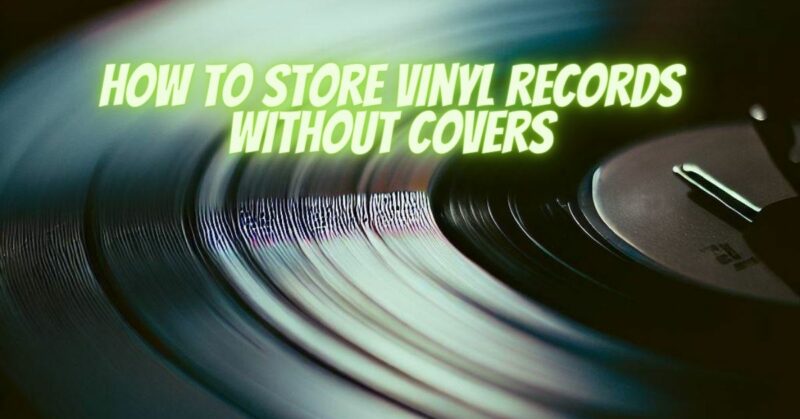While it’s ideal to store vinyl records with their original covers, there may be situations where you need to store records without covers temporarily or due to space constraints. Proper storage of records without covers is crucial to ensure their protection and prevent damage. In this article, we will provide valuable tips on how to store vinyl records without covers effectively while maintaining their condition.
- Inner Sleeves: When storing records without covers, it becomes even more important to use high-quality inner sleeves. Invest in anti-static inner sleeves made from materials like polyethylene or polypropylene to provide a protective barrier for the vinyl surface. Inner sleeves shield records from dust, scratches, and static buildup, minimizing the risk of damage.
- Outer Sleeves: Consider using outer sleeves to provide an additional layer of protection for records without covers. Clear polyethylene or polypropylene outer sleeves will shield the records from dust, dirt, and potential damage. Properly fitting outer sleeves prevent excessive movement and help maintain the integrity of the vinyl.
- Vertical Storage: Store records without covers vertically to minimize the risk of warping and facilitate easy access. Use sturdy record shelving or storage units designed specifically for vinyl records. Vertical storage also helps prevent unnecessary pressure on the records and keeps them in an upright position.
- Spacing and Organization: Maintain adequate spacing between records to avoid overcrowding and potential damage. Leave enough room for easy browsing and retrieval. Consider using dividers or categorization methods to keep your collection organized and prevent records from leaning or falling over.
- Dust Protection: When storing records without covers, dust protection becomes even more critical. Regularly dust the records using a record brush or anti-static carbon fiber brush to remove surface particles. Clean the outer sleeves periodically to prevent dust buildup.
- Climate-Controlled Environment: Store records without covers in a stable temperature and humidity-controlled environment. Avoid extreme temperature fluctuations and excessive humidity, as these conditions can affect the vinyl material and lead to warping or degradation.
- Handling with Care: Handle records without covers with clean hands and be gentle when removing or returning them to the storage area. Avoid touching the playing surface or grooves to prevent fingerprints or dirt transfer. Hold the records by their edges or inner labels to minimize the risk of damage.
- Regular Inspections: Periodically inspect your records without covers for any signs of dust, debris, or damage. Clean the records and sleeves as necessary to maintain their condition. Replace worn or damaged inner sleeves to ensure ongoing protection.
Conclusion:
While storing vinyl records without covers should be a temporary solution or a last resort, it’s important to take proper precautions to protect the records from dust, scratches, and damage. By utilizing high-quality inner and outer sleeves, vertical storage, proper spacing and organization, dust protection measures, a climate-controlled environment, careful handling, and regular inspections, you can ensure the safe storage of records without covers. Remember that storing records without covers for an extended period may increase the risk of damage, so it’s advisable to obtain replacement covers whenever possible. Preserve the quality and integrity of your vinyl record collection, even in challenging storage situations, to continue enjoying the timeless pleasure of vinyl playback.


